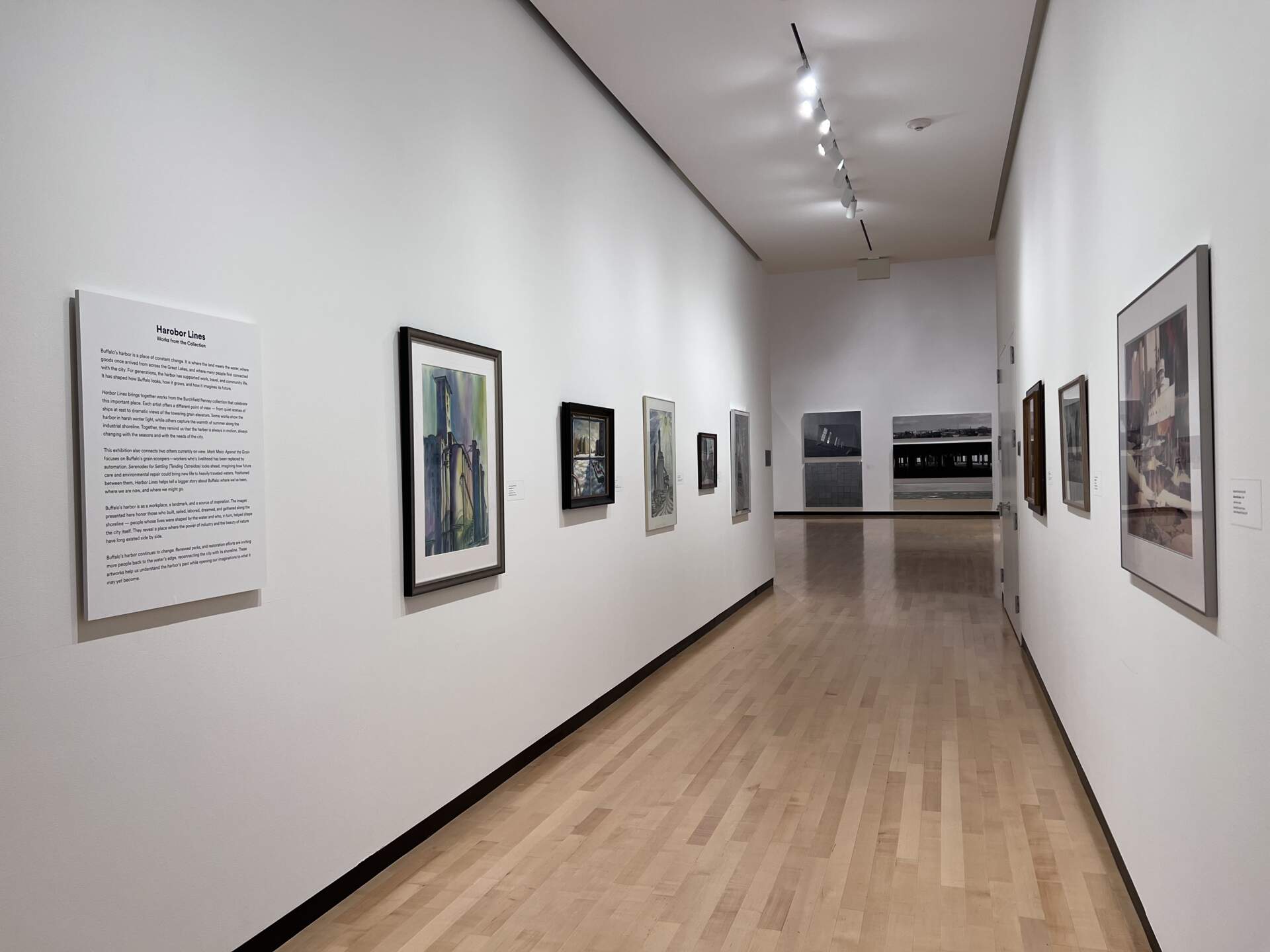
Harbor Lines
Works from the Collection
On View
Oct 30, 2025 - Mar 29, 2026
Buffalo’s harbor is a place of constant change. It is where the land meets the water, where goods once arrived from across the Great Lakes, and where many people first connected with the city. For generations, the harbor has supported work, travel, and community life. It has shaped how Buffalo looks, how it grows, and how it imagines its future.
Harbor Lines brings together works from the Burchfield Penney collection that celebrate this important place. Each artist offers a different point of view — from quiet scenes of ships at rest to dramatic views of the towering grain elevators. Some works show the harbor in harsh winter light, while others capture the warmth of summer along the industrial shoreline. Together, they remind us that the harbor is always in motion, always changing with the seasons and with the needs of the city.
This exhibition also connects two others currently on view. Mark Maio: Against the Grain focuses on Buffalo’s grain scoopers—workers who’s livelihood has been replaced by automation. Serenades for Settling (Tending Ostreidae) looks ahead, imagining how future care and environmental repair could bring new life to heavily traveled waters. Positioned between them, Harbor Lines helps tell a bigger story about Buffalo: where we have been, where we are now, and where we might go.
Buffalo’s harbor is as a workplace, a landmark, and a source of inspiration. The images presented here honor those who built, sailed, labored, dreamed, and gathered along the shoreline — people whose lives were shaped by the water and who, in turn, helped shape the city itself. They reveal a place where the power of industry and the beauty of nature have long existed side by side.
Buffalo’s harbor continues to change. Renewed parks, and restoration efforts are inviting more people back to the water’s edge, reconnecting the city with its shoreline. These artworks help us understand the harbor’s past while opening our imaginations to what it may yet become. In doing so, Harbor Lines highlights the enduring connections formed where land meets water — a line that has defined Buffalo for generations and will continue to guide its future.